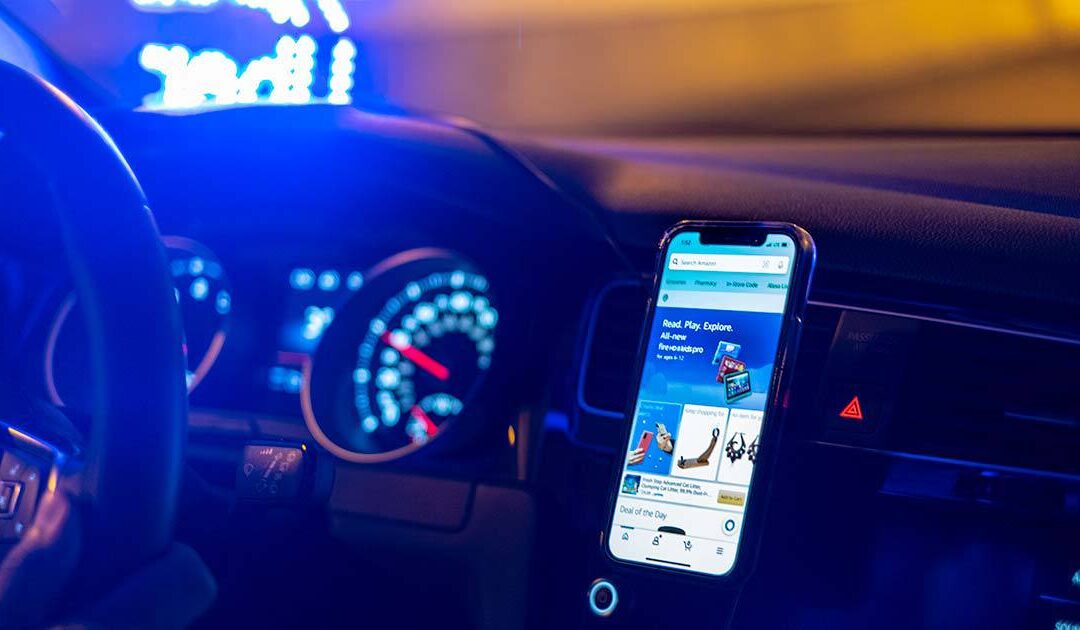Gig-economy workers are 4 times as likely as other drivers to use smartphone apps regularly while driving, a new survey from the Insurance Institute for Highway Safety shows.
“The explosion of smartphone features and services has not only created new forms of driver distraction, but also a new group of rideshare and delivery drivers whose jobs require them to interact with their phones while they’re on the road,” IIHS President David Harkey said.
Parents are also nearly 50 percent more prone to routinely making video calls, checking weather reports and other types of smartphone-enabled distractions than drivers without children 18 or younger, the survey found.
Statistics from the National Highway Traffic Safety Administration indicate that more than 3,000 people died in distraction-related crashes in 2020, accounting for 8 percent of all traffic-related fatalities. Because it’s difficult to determine if distraction contributed to a crash, that number is almost certainly an underestimate.
Anything that diverts the driver’s attention — eating, adjusting the radio, putting on makeup — can increase the risk of a crash. But tasks involving mobile phones and other electronic devices can be both more demanding and more tempting than other common distractions. The variety of smartphone applications has also exploded in recent years.
To begin exploring the impact of these newer applications, IIHS surveyed more than 2,000 drivers nationwide about what secondary tasks they perform while driving. Tasks were separated into ordinary activities and those that involved a mobile phone or another electronic device, and the device-based activities were further categorized into basic talking and texting and smartphone-based activities like programming a navigation app or checking a social media feed. For some device-based activities, drivers were also asked whether they performed the task using a hands-free feature.
Overall, nearly two-thirds of the participating drivers reported performing one or more distracting activities of any type most or every time they drove over the past 30 days. Half said they performed at least one device-based task during most drives. Common device-based activities included making phone calls, streaming music and reading texts, but the most common was programming a navigation app. Far fewer people reported playing games on a mobile device while driving, but 8 percent said they play games regularly while they’re behind the wheel.
For the most part, the drivers said they usually used the hands-free feature for device-based activities when the capability was available. About 8 out of 10 drivers who said they regularly programmed their navigation app and 7 out of 10 who said they regularly read and sent texts while driving reported that they used voice commands to do so.
“Hands-free operation is generally believed to be less dangerous, since drivers can more easily keep their eyes on the road,” said IIHS Research Associate Aimee Cox, the lead author of the study. “However, it doesn’t eliminate the distraction altogether.”
Previous research has shown, for instance, that hands-free systems that require drivers to perform some operations manually, such as scrolling through a contact list, are less safe than those that can be managed completely with voice commands. Hands-free capabilities are irrelevant or impractical for some smartphone-based activities, such as scrolling social media or playing games.
Not surprisingly, the survey showed that drivers between the ages of 18 and 34 were more likely to use smartphone apps while behind the wheel than drivers ages 35-49. Less predictably, however, it also showed that parents of children 18 and younger were 65 percent more likely than other drivers to perform non-device-based tasks, 31 percent more prone to any device-based distraction and 47 percent more likely to engage in smartphone-enabled secondary activities.
Gig-economy workers were more than twice as likely as other drivers to engage in any distracting activity and nearly 4 times as likely to regularly use smartphone apps while driving. The smartphone-based activities they performed also went well beyond communicating with customers and navigating to pickup and delivery locations using the app provided by their employer.
One possible reason could be that they’re more tempted to conduct other business or find ways to entertain themselves while driving because their jobs force them to spend so much time behind the wheel. In response, ridesharing and delivery companies should put in place or strengthen policies that mandate safe practices for necessary operations and restrict device-based behaviors that are not an essential part of the job.
“These results show that nobody is immune to distraction and suggest that hands-free capabilities may be making us a little too comfortable using our phones and other devices behind the wheel,” said Harkey.
Source: https://www.iihs.org/news/detail/smartphone-apps-drive-gig-workers-parents-to-distraction

